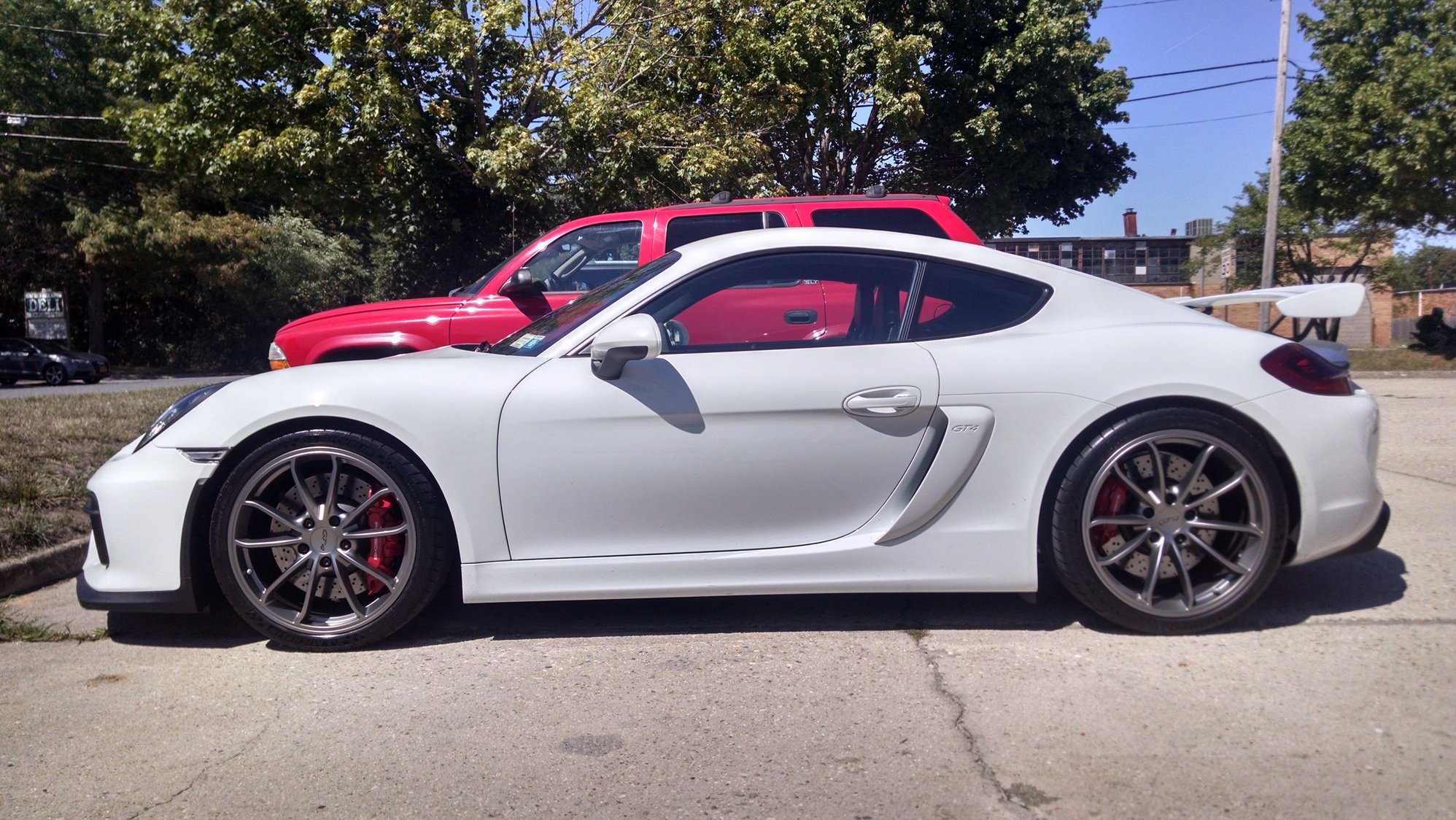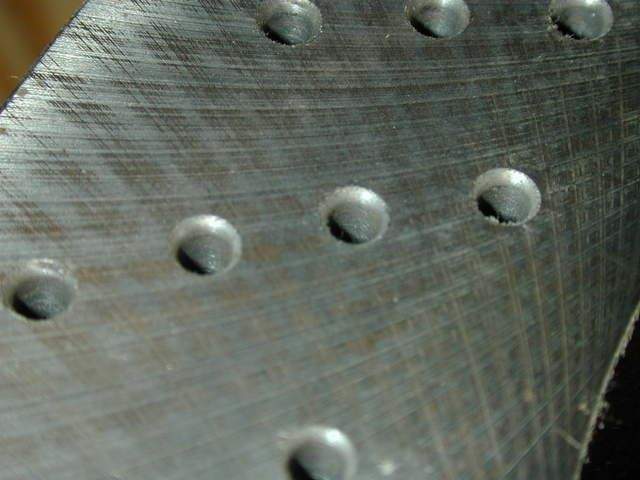Cross Drilled rotors for the F Type ?
#22
From: http://www.jaguar.com/Images/F-TYPE%...m76-110851.pdf
If your F-TYPE is tted with the Jaguar Carbon Ceramic Braking system (CCM), the fitment of brake ducts is recommended (part nos. T2R-15213 and T2R-15214). These should be fitted for track use only (they are not advised for road use) and are straightforward to fit and remove. They assist with brake cooling on the track and are available from authorised Jaguar dealers.
Karl.
#23
Side note that if you have the carbon ceramic brakes, Jaguar recommends adding special brake ducts when on track, and removing them afterwords.
From: http://www.jaguar.com/Images/F-TYPE%...m76-110851.pdf
If your F-TYPE is tted with the Jaguar Carbon Ceramic Braking system (CCM), the fitment of brake ducts is recommended (part nos. T2R-15213 and T2R-15214). These should be fitted for track use only (they are not advised for road use) and are straightforward to fit and remove. They assist with brake cooling on the track and are available from authorised Jaguar dealers.
Karl.
From: http://www.jaguar.com/Images/F-TYPE%...m76-110851.pdf
If your F-TYPE is tted with the Jaguar Carbon Ceramic Braking system (CCM), the fitment of brake ducts is recommended (part nos. T2R-15213 and T2R-15214). These should be fitted for track use only (they are not advised for road use) and are straightforward to fit and remove. They assist with brake cooling on the track and are available from authorised Jaguar dealers.
Karl.
#24
Side note that if you have the carbon ceramic brakes, Jaguar recommends adding special brake ducts when on track, and removing them afterwords.
From: http://www.jaguar.com/Images/F-TYPE%...m76-110851.pdf
If your F-TYPE is tted with the Jaguar Carbon Ceramic Braking system (CCM), the fitment of brake ducts is recommended (part nos. T2R-15213 and T2R-15214). These should be fitted for track use only (they are not advised for road use) and are straightforward to fit and remove. They assist with brake cooling on the track and are available from authorised Jaguar dealers.
Karl.
From: http://www.jaguar.com/Images/F-TYPE%...m76-110851.pdf
If your F-TYPE is tted with the Jaguar Carbon Ceramic Braking system (CCM), the fitment of brake ducts is recommended (part nos. T2R-15213 and T2R-15214). These should be fitted for track use only (they are not advised for road use) and are straightforward to fit and remove. They assist with brake cooling on the track and are available from authorised Jaguar dealers.
Karl.
#25
I'm guessing because of the risk of ingesting debris in street use. I believe ceramic brakes are more susceptible to damage (e.g. chipping) if say a pebble was sucked up.
But it is rather baffling as to why they'd recommend them with the ceramics and not with the steel brakes. I would have guessed the superior thermal capacity of the ceramics would reduce the need for ducts (not the other way around).
Speaking of which, I wonder if these ducts would fit cars with the steel brakes?
Karl.
But it is rather baffling as to why they'd recommend them with the ceramics and not with the steel brakes. I would have guessed the superior thermal capacity of the ceramics would reduce the need for ducts (not the other way around).
Speaking of which, I wonder if these ducts would fit cars with the steel brakes?
Karl.
#26
#27
It is odd. Brake ducts, both front and rear, are std. on the C7 Z51 ("track package") and Z06. Brembo brakes (4 pots front and rear) w/ slotted rotors are also std on the Z51 w/ 6/4 pots on the Z06.
They used cross-drilled rotors on the C6 Z06, but changed to slotted rotors because of complaints about cracking on the track.
They used cross-drilled rotors on the C6 Z06, but changed to slotted rotors because of complaints about cracking on the track.
#28

I was working at Long Island and what did I see, a new Porsche 911 GT4 RS.
this car is a race track car. It has drilled rotors. It convinced me that if this particular car has drilled rotors, it's okay to install the same to my car. It will complete the aggressive look for the brakes.
Last edited by Ubad2; 08-25-2016 at 07:06 PM. Reason: Photo
The following users liked this post:
Burt Gummer (06-02-2018)
#29

I was working at Long Island and what did I see, a new Porsche 911 GT4 RS.
this car is a race track car. It has drilled rotors. It convinced me that if this particular car has drilled rotors, it's okay to install the same to my car. It will complete the aggressive look for the brakes.
#30
Thanks
#31
No. Those holes may indeed go through the rotor, but rather than being drilled, the were molded right into the rotor when it was poured into the cast. They would have then machined a bevel (chamfer) at the surface leading into the hole after turning (machining) a smooth surface on each side of the rotor. (Relatively) Cheap aftermarket rotors are cross drilled. High end cars with holes will generally be cast. In fact, EBS will not sell any cross-drilled rotors unless they were offered by the OEM for less expensive cars. With a car as heavy as the F-Type, a lot of heat will be generated cranking the car down from 100+ mph, so the danger of heat fracturing around the holes is real unless they are cast into the rotor.
The following 3 users liked this post by Unhingd:
#32
No. Those holes may indeed go through the rotor, but rather than being drilled, the were molded right into the rotor when it was poured into the cast. They would have then machined a bevel (chamfer) at the surface leading into the hole after turning (machining) a smooth surface on each side of the rotor. (Relatively) Cheap aftermarket rotors are cross drilled. High end cars with holes will generally be cast. In fact, EBS will not sell any cross-drilled rotors unless they were offered by the OEM for less expensive cars. With a car as heavy as the F-Type, a lot of heat will be generated cranking the car down from 100+ mph, so the danger of heat fracturing around the holes is real unless they are cast into the rotor.
So... a company like STOP TECH and other suppliers do not do mold pouring to form the rotor and instead simply use drilling method.
Is this is case ?
#34
No. Those holes may indeed go through the rotor, but rather than being drilled, the were molded right into the rotor when it was poured into the cast. They would have then machined a bevel (chamfer) at the surface leading into the hole after turning (machining) a smooth surface on each side of the rotor. (Relatively) Cheap aftermarket rotors are cross drilled. High end cars with holes will generally be cast. In fact, EBS will not sell any cross-drilled rotors unless they were offered by the OEM for less expensive cars. With a car as heavy as the F-Type, a lot of heat will be generated cranking the car down from 100+ mph, so the danger of heat fracturing around the holes is real unless they are cast into the rotor.
I'm no expert on the definitive cause of rotor destruction due to the presence of holes, but from a pure engineering perspective, a chamfered hole (drilled or cast) is far less likely to stress and fracture than a hole that is not chamfered. The chamfering breaks the edge where the hole meets at a perpendicular 90 degrees to the face of the rotor. This "bevel" to that specific location substantially reduces the pressure and stress on the substrate material.
Do people that drill their holes, actually NOT chamfer? If not, I wonder what the correlation is among failed rotors when comparing chamfered vs. non-chamfered manufacturing?
Last edited by IronMike; 08-25-2016 at 08:21 PM.
#35
The following users liked this post:
Burt Gummer (06-02-2018)
#36
#38
I can't speak to Stop Tech's production methods, but if the product literature states "cross-drilled", the holes are drilled rather than molded.
#40
After looking at the F Type R for a year......I bought one two weeks ago.
this forum has been part of why I bought it. thanks to all for helping me spend my money!
on the Brakes, who is making the calipers for Jaguar.
I have the iron rotors, I know that the CC are from Brembo.
For years I have tracked my 1990 ZR-1 and still do, also with the 2001 BMW M-5 that I sold after 16 years to buy the Jaguar. I will also run the F Type and need to get pads for it, Road America loves to eat pads and Rotors!
At RA the front straight is good for 150 in the old ZR-1 and the M-5 would do 152/153. turn one is good for about 70-73, from turn 3 to turn 5 is back to 145 and than turn 5 is down to 35 or so.
Dean Nelson
this forum has been part of why I bought it. thanks to all for helping me spend my money!
on the Brakes, who is making the calipers for Jaguar.
I have the iron rotors, I know that the CC are from Brembo.
For years I have tracked my 1990 ZR-1 and still do, also with the 2001 BMW M-5 that I sold after 16 years to buy the Jaguar. I will also run the F Type and need to get pads for it, Road America loves to eat pads and Rotors!
At RA the front straight is good for 150 in the old ZR-1 and the M-5 would do 152/153. turn one is good for about 70-73, from turn 3 to turn 5 is back to 145 and than turn 5 is down to 35 or so.
Dean Nelson


